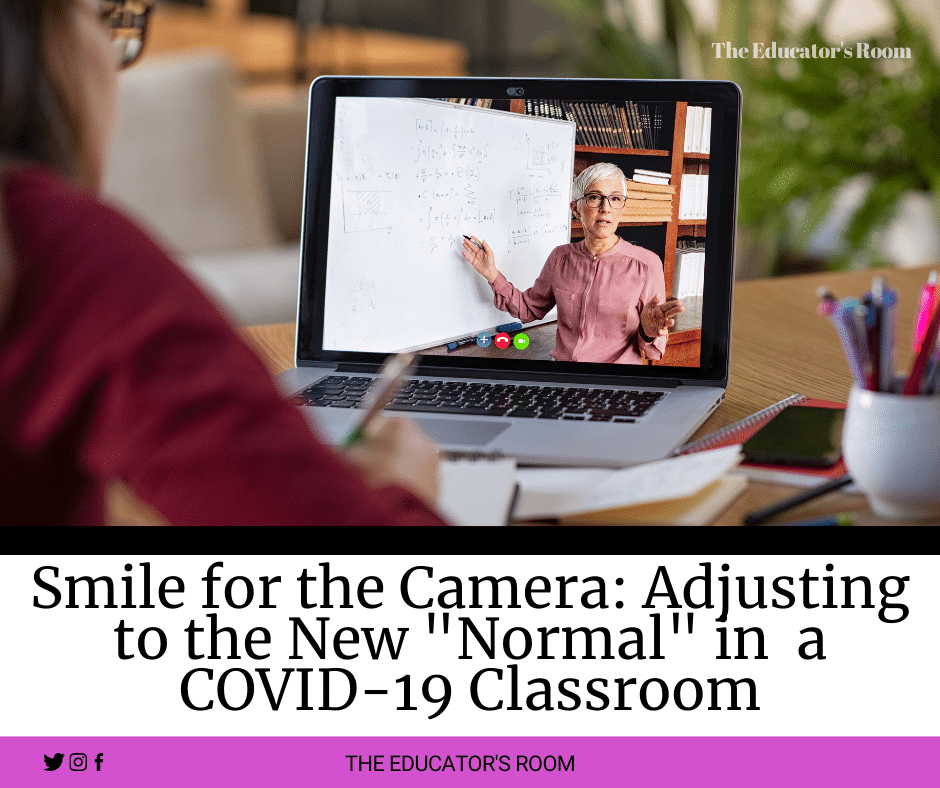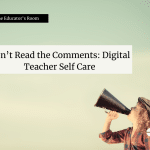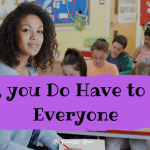This year, teaching is lonely. Like many other districts across the country, we are teaching and learning online for the foreseeable future.
I desperately want to be back in person with my students, but our national leadership is more concerned with political gain than American life. Wearing a mask is a political statement, cases aren’t contained, and in a moment of global crisis, we are deeply divided.
In this reality, the normal we all want isn’t possible, and I’m glad we chose to prioritize the safety of our staff and students. But, that doesn’t mean I’m not experiencing intense growing pains, or wishing things were different.
I miss the energy and life students bring to my classroom; music crackling through earbuds, smiles at my cheesy jokes, Converse squeaks on tile, students hugging because it’s just been so long.
This summer, I had optimistic ideas of what online learning would look like. I consider myself mostly tech-savvy, so I figured I’d make the best of it. I followed Instagram teachers and did online training, getting as prepared as possible. But, while I anticipated the tools I’d need to transition, I didn’t consider how lonely it would feel. Or how that emptiness would make me feel like a failure.
No Camera Zone
To state the obvious, teaching in front of a screen is hard.
This summer, our teacher leadership teams discussed how to create distance learning practices that are equitable for all students. We decided that we wouldn’t force students to have their cameras on for a variety of reasons, including their sense of safety. With video classes, suddenly an entire classroom can invade a student’s home. This reality can highlight the hardships so many of our students have learned to hide face to face. There’s no acting tough in front of floral wallpaper. No pretending you have a closet full of Yeezys when you share a room with your two siblings.
I completely agreed with that, at least intellectually. I want to create a safe space for my students where they feel comfortable learning, in my class, or online. I don’t “force” students to do much of anything besides be kind to each other, so I couldn’t fathom the purpose of enforcing something like cameras.
But, I started to feel differently after my first class.
I opened our first meeting playing Kendrick Lamar (the clean station) in the background. I wore a social justice shirt my club students had designed. My camera background was engaging and welcoming and I had a great first lesson. I was, for all intents and purposes, ready and I couldn’t wait to see my students’ faces.
Instead, I saw 26 little black squares.
I quickly realized that I had optimistic ideas of lively Zoom meetings; a sea of faces eagerly awaiting discussions, waving at each other on screen, and unmuting to say hello. Essentially, I anticipated the energy and joy of my classroom, just in miniature on my computer screen. Like a delightful model replica!
That clearly wasn’t the case. Every other class that first week was similar. I did get to see a few faces, but I could tell they were scared. Or, they were just doing it because I’d asked, which made me feel squeamish about the teacher-student hierarchy I try so hard to dismantle.
Somehow, in all my preparations this summer, I thought I could bust through the awkwardness of online learning. I would be the teacher that would be caring, personable, exciting, or dynamic enough that my students would want to turn their cameras on.
Instead, in those first few days, I just really felt how incredibly awkward it is trying to teach for a whole class period when you are, ostensibly, only talking to yourself. I’ve always been extremely self-critical, so it was no wonder I took the lack of cameras personally.
There were occasional messages in the chat, mostly to say something wasn’t working, but otherwise, I spoke into the void, hoping they were doing the activities on the other side.
I am an expressive communicator. I wave my hands when I talk. I start to speed up and get louder when I’m excited or passionate. I nerd out about books, beautiful language, colorful pens, and watermelon gum. I use cringy puns and share pictures of my dogs just to make them laugh.
I’m trying to do all of that online, but without any feedback, I have no sense of how they’re feeling or if what I am saying is resonating at all. They could be listening, chuckling, or affectionately rolling their eyes. Maybe they’re texting their friend about how terrible class is or posting me to TikTok. They might not have even heard a word I said because they’re in another room or have decided to take a nap.
I never thought I’d want to control how my students are learning, especially in this chaos, but staring at those little black squares is getting to me. My typical teaching panic dreams, which were blissfully absent since March, have swiftly returned.
What’s Best for Students?
After the first few days, a colleague and I were discussing how online “classrooms” feel. He brought up a great point: Are the cameras really there to help our students learn, or does having them on just benefit us?
This colleague knows that I pride myself on being reflective about my teaching practice, and this question helped me reframe my thinking. And, yes, quell the panic of inadequacy that was making me toss and turn.
With every lesson, text, unit, or assignment I design, I ask myself what is best for students. I design learning goals based on what they need, what I want them to learn, and how I can help them grow. If I apply that same reflective criterion to our online classroom, cameras don’t even cross my radar.
Asking myself this question even once made me realize cameras are really about my discomfort, which has nothing to do with student learning.
Working With What We Have
If live class sessions don’t have the magic I was hoping for, at least not yet, I need to be intentional about building relationships with students. The interactions I would normally have in passing, about last night’s game or a favorite book, are going to take work.
My student’s first assignment was an opening survey where I asked them questions on everything from the challenges they have in English to their favorite snack food. Across my classes, I saw honesty and vulnerability that tells me that I am doing everything that I can to create a safe space for them.
I just have to come to terms with the fact that our space doesn’t look the way I want it to.
In the responses, one student admitted he’s scared about distance learning because he’s always struggled with technology. He promised me he’d try his best.
Another student told me she was harassed online this summer because she believes in Black Lives Matter. She thanked me for the BLM poster I have behind my camera in class.
Yet another told me that she told her girlfriend “I love you” and she wanted to share because she saw the rainbow sticker on my water bottle.
One student even apologized for not having her camera on, because she babysits her brothers during the school day. She didn’t want them to distract the class.
After reading through every survey, I left a voice comment for every single student. 130 individual voice memos. I didn’t polish or edit them. I let myself say “umm” and ramble excitedly as I would in class because I want them to know me. I want them to know I’m going to make mistakes, sound ridiculous, and care about them in the best ways I know-how.
I’ll never know, but I hope when students listened, they rolled their eyes and laughed. I hope they played it for their little sister and said “listen to my English teacher! She’s way too excited about this school thing.”
I hope they feel seen, in some small way because that’s the best part of being together in a classroom, virtual or otherwise. It’s our shared humanity, laughing and learning together that I don’t want to lose, even if everything feels so different.
So, next week, I’m going to stop asking for cameras on my opening slide. My students know it’s always an option, but I’ll be smiling at them, whether or not I can see them smile back, because it’s not about me. It’s about them.







Thank you for writing about virtual classroom equity in the time of Corona. I have already referenced this article to a few colleagues as a text to read and reflect with teammates!
Thank you so much for your support, Flordelrio and I’m glad this resonated. I hope this can be a helpful lens in your coaching as you help teachers wrestle with the chaos of this school year. Remind them to give themselves grace (as I know you will!).
You remain my everything <3